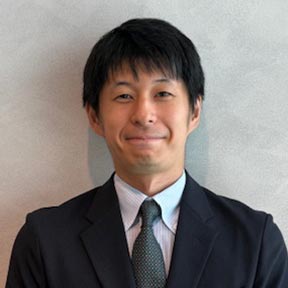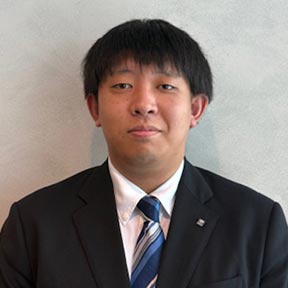2025.11.20

Introducing the Life-Saving Dashcam

Camera unit (left) and battery unit (right)
Tokio Marine & Nichido’s New Tool for Enhancing Automobile Safety and Security
Tokio Marine & Nichido’s Drive Agent Personal (DAP) plan, an auto insurance product bundled with a dashcam for individual users, represents a new milestone in the ongoing evolution of auto insurance.
Since April 2017, Tokio Marine & Nichido has been offering the Drive Agent Personal (DAP) auto insurance plan bundled with a dashcam for individual users: the first product of its kind introduced by a major Japanese non-life insurance company. Since the launch of the DAP service, the company has provided numerous customers with comprehensive support for accident prevention and response.
When a strong impact is detected during an accident, it is automatically reported to Tokio Marine & Nichido’s partner security company. Their operators assess the circumstances of the accident and the condition of the passengers using images from the front and in-cabin cameras. Initial actions can then be taken, such as requesting emergency assistance.
Yohei Kudo, Unit Leader of the Automobile Insurance Group in the Personal Lines Underwriting Department, explains, “When an accident involving a strong impact occurs, the dashcam automatically connects to the partner security company, which operates 24 hours a day, enabling a prompt response even when the driver is unable to call an ambulance or the police. While footage from the front camera may be sufficient as evidence, the in-cabin camera plays a crucial role in protecting lives. Moreover, we regard the dashcam’s real-time connectivity as a major advantage.”
Since its launch, the service has grown to over one million contracts with both individual and corporate customers, and has enabled swift initial responses, including emergency calls when necessary, in roughly 56,000 accidents. It does so by leveraging the dashcam’s automated video recording and transmission functions at the time of an accident. While DAP’s core features, such as automated accident notification, have been highly praised, customers have also requested further improvements, including a more compact dashcam, easier installation, simpler functionality, and lower cost.
“We wanted to provide a new dashcam that would better meet our customers’ needs,” says Mr. Kudo.

Image of a mounted dashcam
Expanding customer reach
Starting in January 2026, TMNF will begin offering an optional rider that provides policyholders with a new rental dashcam equipped with an automated accident notification feature, the third-generation model in the series.
The new device is more compact than previous models. By focusing on core functions—automated accident notification and video transmission to the partner security company—the monthly premium will be a more affordable 500 yen*, lower than for riders with previous dashcams. In addition, to make installation easier, TMNF will offer an installation support service that installs the new device at no extra charge to customers.
“The new DAP service is designed to ensure that our customers are protected in the event of an emergency. We hope many people will see it as a dependable safety companion on the road. Going forward, we will continue to provide safe, reliable, and high value-added services that meet our customers’ evolving needs by making effective use of dashcam data and other technologies,” says Mr. Kudo.
*Monthly premium for an annual policy, payable in installments (including installment surcharge)
Using DAP data to address social issues
In addition, the company will begin a full-scale rollout of the DAP Traffic Safety Class program in April 2026. The classes use driving video data collected through DAP dashcams to provide safety education for elementary school children.
Among all age groups, elementary school children, especially first and second graders, are considered the most vulnerable to fatal pedestrian traffic accidents. One reason is that upon entering school, they are more likely to walk around in more places, but their short height is also more likely to place them in drivers’ blind spots. This has become a social issue in Japan, commonly referred to as the “age seven safety risk” problem. Daiki Utoo, Associate of the Automobile Insurance Group in the Personal Lines Underwriting Department, explains:
“About 3,500 first and second graders were involved in traffic accidents between 2020 and 2024. As student-centered learning becomes increasingly widespread in schools, we want to offer classes that use DAP data from the communities where children actually live to help them think about traffic safety.”

Example of a School Route Risk Map
Color of pin: Represents the risk level based on the frequency of detected vehicle impacts. The four colors—blue, green, purple, and red—represent increasing risk levels, with red indicating the highest.
Direction of pin: Represents the vehicle’s travel direction at the time the impact was detected.
This class is designed to raise children’s awareness of potential hazards on their school routes by using a School Route Risk Map, which uses dashcam data to visualize drivers’ hazardous behaviors, such as hard braking, sudden acceleration, and abrupt stopping. The map also highlights locations where accident impact data has been frequently recorded. Using DAP data enables the creation of up-to-date hazard spot maps based on the latest information.
Led by about 17,000 employees nationwide, the program will provide lectures and quizzes on traffic rules. Based on actual school routes around each participating school, it will encourage children to anticipate potential hazards by considering where, how, and why they may occur. The program will also discuss the possible causes of accidents and suggest preventive measures. After the class, each child will receive an original certificate to take home, which will help encourage family discussions about traffic safety. Furthermore, during national traffic safety campaign periods, DAP policyholders across Japan will receive voice and on-screen alert messages when the dashcam starts up, such as “Watch out for children, who may suddenly run onto the road,”
“Using DAP data specific to each school’s neighborhood as teaching material will help children learn about real hazardous spots on the school routes they use every day. The classes will be conducted by our frontline employees, drawing on their own experience and expertise, which we believe will make the sessions highly meaningful and practical. We hope that many schools will take part in the program,” says Mr. Utoo.
TMNF’s other initiatives utilizing dashcam data include: DAP-assisted damage assessments conducted following the Atami landslide in July 2021, the provision of ground-crack maps after the Noto Peninsula Earthquake in January 2024, and the acceleration of insurance payouts through our proprietary algorithm developed using collected impact data. Going forward, we will continue to help reduce traffic accidents by conducting ongoing educational programs to instill traffic safety awareness among children. Also, with dashcam data accumulated daily and by making use of advances in AI technology, we will continue to update the School Route Risk Map.
INTERVIEWEES

Yohei Kudo
Unit Leader, Automobile Insurance Group, Personal Lines Underwriting Department

Daiki Utoo
Associate, Automobile Insurance Group, Personal Lines Underwriting Department
Tokio Marine & Nichido Fire Insurance Co., Ltd.
2-6-4 Otemachi, Chiyoda-ku, Tokyo
Tokio Marine & Nichido Fire Insurance Co., Ltd., is one of Japan’s largest non-life insurance companies. Since its founding in 1879, it has been delivering peace of mind and safety to its customers through insurance services, guided by its purpose: to be there for our customers and society in times of need. Going forward, the company will continue to provide innovative solutions beyond the traditional insurance domain, aiming to meet the diverse and evolving needs of its customers.
